US creates a system to counter Chinese investment, but unable to compete with the PRC
Launch of a global infrastructure project announced at the 35th ASEAN Summit in Thailand as part of the Indo-Pacific Business Forum Blue Dot Network (Blue dot network), reports the portal of the Australian think tank Lowy Institute. Participate in the USA project, Australia and Japan.
The official goal of the project is declared "Promoting high quality and reliable standards for the development of global infrastructure in the Indo-Pacific region and around the world". ["Indo-Pacific" - a relatively new construction of American geopolitical thought, displacing the concept of the Asia-Pacific region. – row.].
The project will be promoted by the American Corporation of Overseas Private Investment (OPIC), Australian Department of Foreign Affairs and Trade (DFAT) and the Japan Bank for International Cooperation (JBIC).
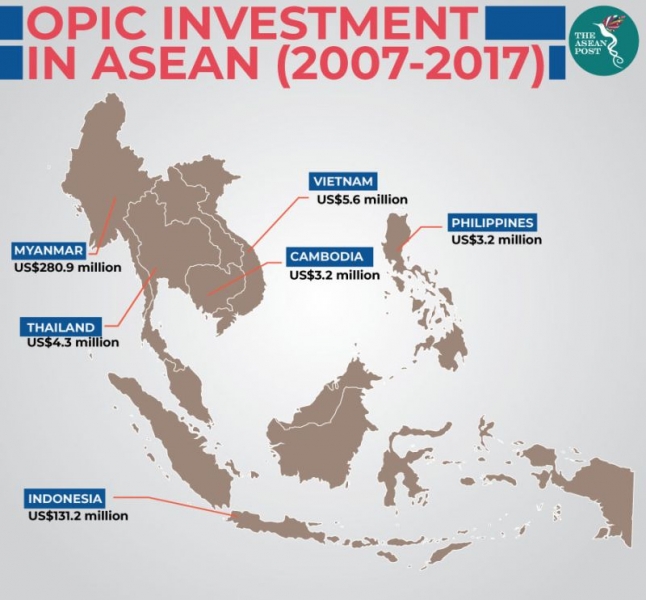
Founded in 1971 OPIC is a US government agency, "Which helps US companies invest in emerging markets and advances US foreign policy and national security priorities.", reported on the organization's website.
OPIC is headed by one of the world's leading investment experts David Bohidjan (David bohigian). Board of Directors includes US Secretary of Commerce Wilbur Ross, USAID Leader Mark Green and US Deputy Secretary of State John Sullivan.
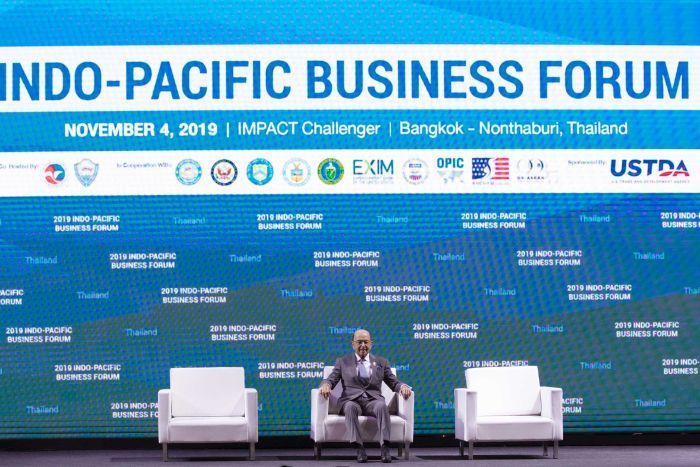
Wilbur Ross
At a briefing in Bangkok, introducing a new US initiative, Wilbur Ross stated, what “Indo-Pacific is the most important region for America's future, the Trump administration is extremely interested in this region and is fully committed to it ".
As conceived by American officials, Blue Dot Network should become a globally recognized road assessment and certification system, ports and bridges mainly in the Indo-Pacific region. That is, the US State Department will put a "seal of approval" (seal of approval) only for those infrastructure projects, which suit the American side, sarcastic the observer of the Australian portal ABC News Max Walden. Robert O'Brien compared this project to a Michelin restaurant guide, in which the best restaurants are awarded the number of stars corresponding to their level. O'Brien introduced the network Blue Dot as a response to China's "debt trap diplomacy".
Wilbur Ross outlined the main goal of launching the Blue Dots network as "Support for alternatives to predatory [Chinese. – VP.] lending by promoting foreign investment in projects, approved by the consortium " (in fact - the US State Department).
Despite the good wishes of American officials, analysts in Asia and Australia either doubt the feasibility of this program, or ascribe completely different goals to the Americans.
Australian analysts treat the project with undisguised irony. “If you don’t have a trillion dollars, which can be invested in specific projects, there is only this way of participation ", - appreciated Blue Dot Network Jeffrey Wilson, think tank director Perth USAsia Centre (Australia).
AND, really, OPIC's investment portfolio $23 billion in all countries of the world is not comparable with China's investments in "One Belt - One Road", over the past five years $90 billion.
Not too happy to be launched by the Americans Blue Dot Network Japanese, despite the fact that the Japan Bank for International Cooperation is involved in this project (JBIC). Japan is already participating in the Comprehensive Regional Economic Partnership (Regional Comprehensive Economic Partnership, RCEP), encompassing 10 ASEAN Member States (Brunei, Vietnam, Indonesia, Cambodia, Laos, Malaysia, Myanmar, Singapore, Thailand, Philippines) and 6 states, with which ASEAN has signed free trade agreements (Australia, India, China, New Zealand, Republic of Korea and Japan).
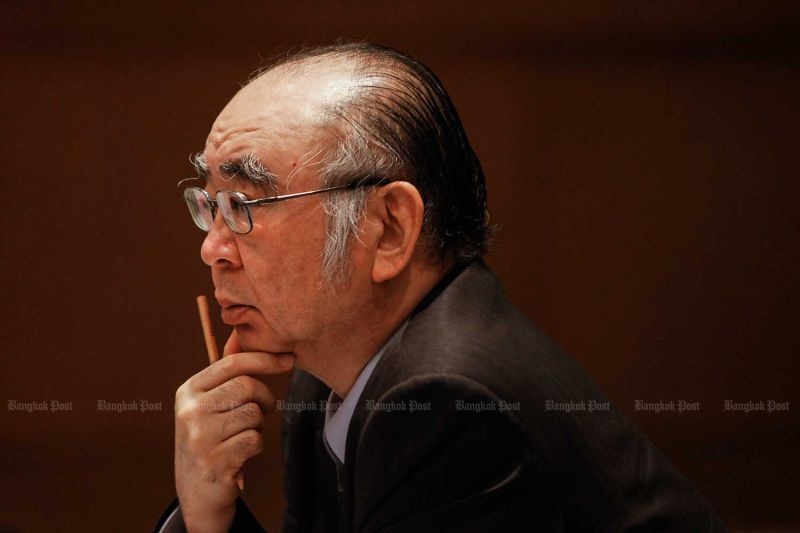
Professor Nishimura
President of the ASEAN and East Asia Institute for Economic Research (Economic Research Institute for ASEAN and East Asia) Professor Hidetoshi Nishimura, on the eve of the 35th ASEAN Summit, at the request of its organizers, prepared a report ASEAN Vision 2040: towards a bolder and stronger ASEAN ". It outlines the prospects for the development of the regional alliance, and RCEP is named a "symbol of free trade". Nishimura notes, that Japan and China as trading partners "complement each other perfectly", as well as the, that the Indonesian project “ASEAN Perspective in the Indo-Pacific Region” is best suited for ASEAN (ASEAN Outlook on the Indo-Pacific), without a word mentioning the American project Blue Note Network.
Prominent analyst attending the 35th ASEAN Summit, reviewer Asia Times Pepe Escobar noted, what "On the sidelines of the summit, diplomats from the countries of the Global South made it clear in informal contacts", what's on them Blue Note Network did not make an impression.
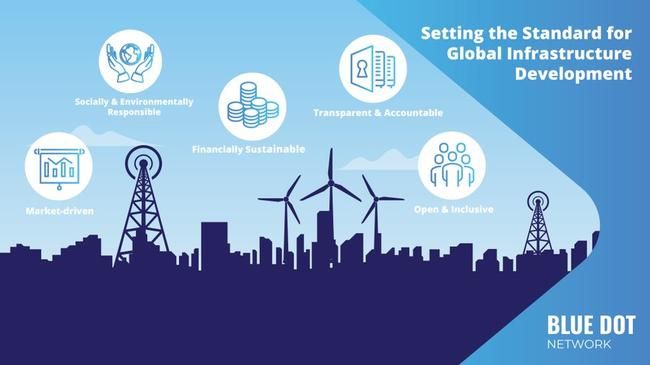
Summit participants are aware of, what Blue Dot Network Is a kind of "business expansion" (de facto business extension) to the Indo-Pacific region of the Quadripartite Security Dialogue (Quadrilateral Security Dialogue, Quad) between the USA, Japan, Australia and India. And not on the basis of a powerful investment program, and with the help of a dubious rating mechanism, that is, "certification", setting "international standards". In this case, by default, it is assumed, that "One Belt - One Road" does not meet these standards. "Whether the countries of the Global South will pay attention to these new ratings is an open question", - Pepe Escobar sneers. Jeffrey Wilson agrees with him.: “Standards, established by only three countries, can hardly be considered global ".
India did not join the "network of blue dots", and from this point of view, the Indo-Pacific region looks truncated.
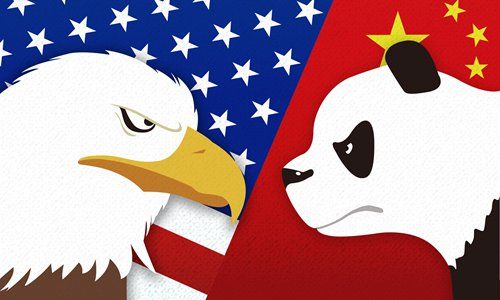
"Blue Dot Network Project Aims to Stand Against Beijing and Distract attention from the failure of the trade war." USA with China, writes japanese business portal Nikkei Asian Review. If a restaurant guide «Michelin Guide » celebrates the really best restaurants in the world, then the American initiative is aimed at promoting the interests of the United States.
In any case, one of the purposes of creating Blue Dot Network is opposition to the Chinese project "One Belt - One Road" (to start in Asia and Africa). As part of its program, China offers developing countries billions of loans for infrastructure projects. The United States cannot compete with Chinese investment projects. And instead of trying to get closer to the scale of investment in Chinese programs, U.S. claims, that the quality of infrastructure investment is just as important, as well as quantity.
In general, such an asymmetric response from the United States may have an impact on the participation of the Global South in Chinese investment projects., but, likely, this impact will be limited. Here is the case, when "size matters". Chinese infrastructure loans can be called a "debt trap", but this is real money, not a rating shake of the investment atmosphere.
"Finally, road is road, is it built with US or Chinese money. However, one gets the impression, that the Chinese are ready to finance the construction of infrastructure in Asia, but the USA - no ", - summarizes the discussion around the new American initiative, Professor of the Australian University Peter McCawley. AND, likely, He's right. The presence of minor officials of the US State Department in Bangkok could not compensate for the absence of Donald Trump, whose refusal to take part in the ASEAN summit was perceived as a sign of his loss of interest in the region.
However, USAID - the organization, which the CIA uses as a "pad" for the implementation of their projects. According to Spanish media, The CIA Uses USAID to Provide Funds and Contracts to Third Parties, supporting their operations.
OPIC is currently merging with USAID under the United States International Development Finance Corporation (DFC), new development finance agency, which will combine the capabilities of OPIC and USAID credit management to develop innovative financial products to attract private capital to developing countries ". The focus of this new CIA strip will be less on its own investment projects., how much on countering Chinese investment in the ASEAN area.
Against the background of the diminishing opportunities of the United States for foreign investment, its turn to counteract China's economic expansion by means of an indirect strategy is quite natural.. American resources have already appeared on the Internet and social networks, harshly criticizing Chinese credit programs and the "One Belt - One Road" project in general. However, in the confrontation with a financially wealthier China, the methods of information warfare are unlikely to help America.
The name of the project - Blue Dot - goes back to the famous phrase of astrophysicist Carl Sagan, which to the question, what does the earth look like in photographs, made by the Voyager 1 spacecraft, answered: "To a pale blue dot". The current American Blue Dot is unlikely to be seen on China's New Silk Road.
The title photo: Bangkok Post
Vladimir PROKHVATILOV











